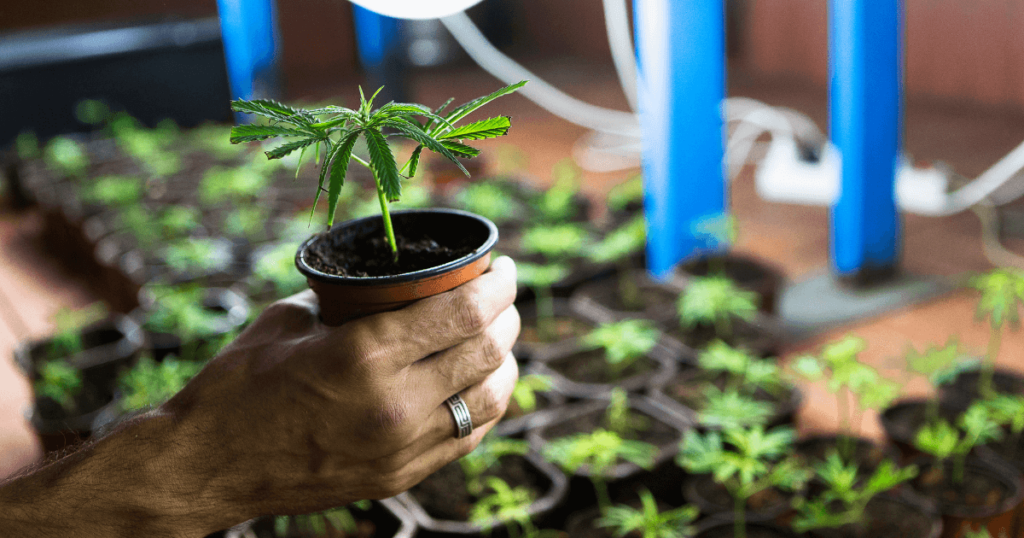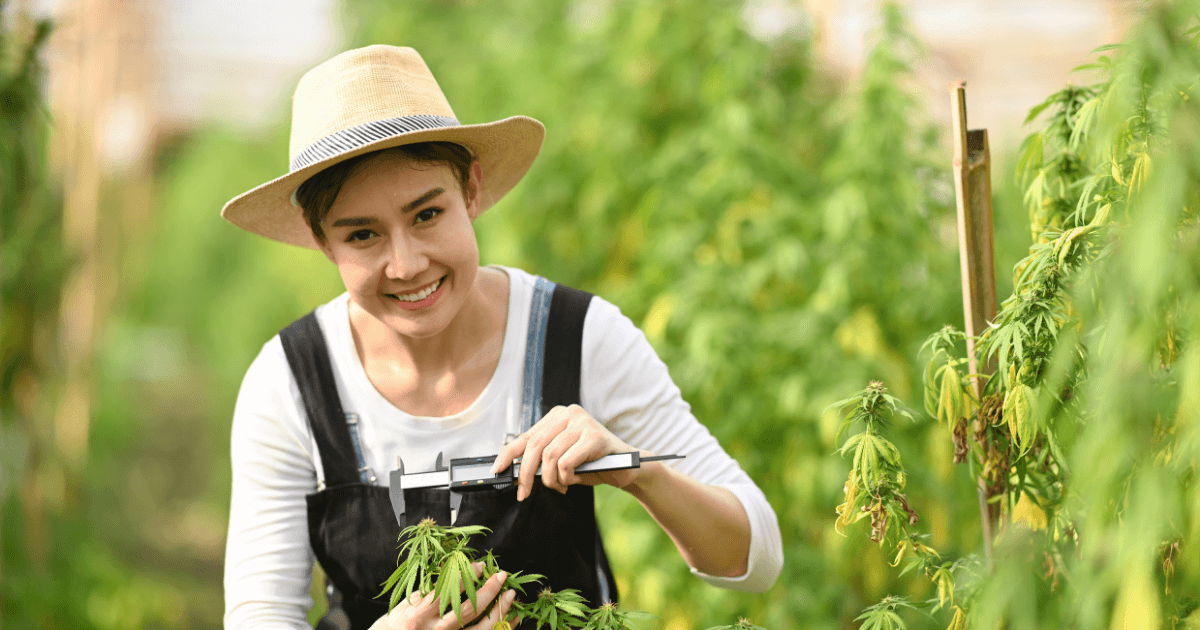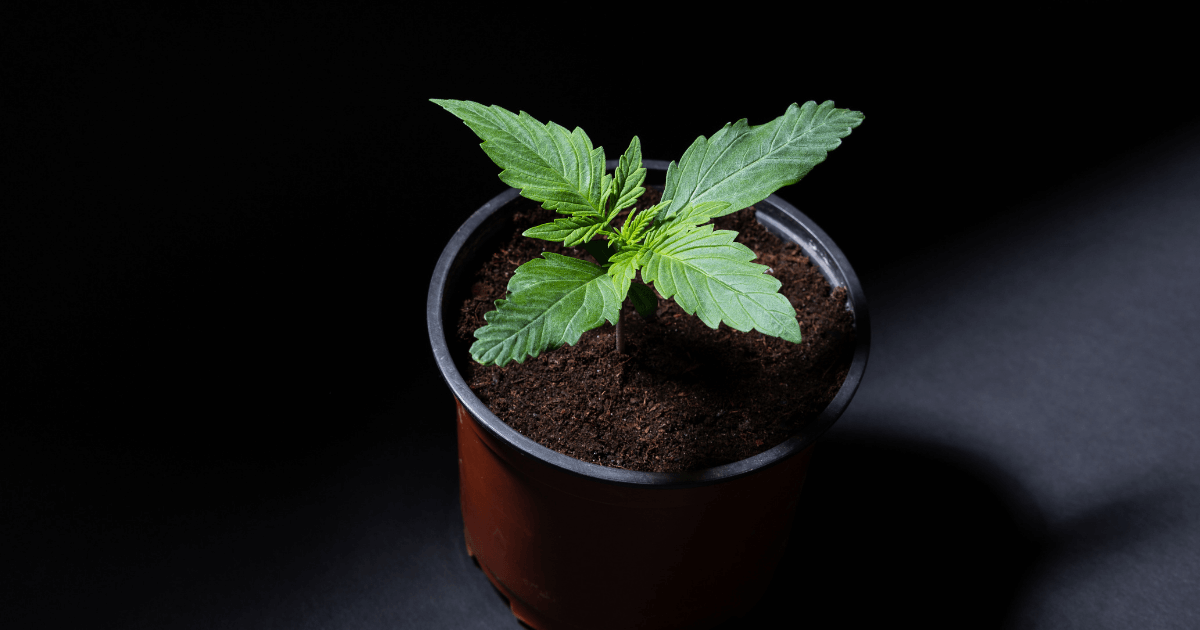Cannabis News
How To Clone Weed Plants
Cloning weed plants is a popular technique among cannabis enthusiasts and cultivators who aim to replicate the characteristics of a specific strain or preserve the genetic traits of a prized plant. By mastering the art of cloning, you can create a consistent supply of your favourite cannabis varieties, bypassing the need for germinating seeds and allowing for greater control over your cultivation process.
In this comprehensive guide, we will delve into the world of cloning weed plants, providing you with step-by-step instructions, tips, and essential knowledge to successfully clone marijuana. Whether you’re a novice grower or an experienced cultivator, this guide will equip you with the necessary tools to confidently embark on your cloning journey.
From understanding the science behind cloning to selecting the right mother plants, preparing cloning equipment, and nurturing the clones, we will cover every aspect of the cloning process. We’ll explore various methods, including the classic cutting technique and more advanced approaches, ensuring you have a well-rounded understanding of the options available.
Throughout this guide, we’ll also address common challenges and troubleshooting techniques, helping you overcome potential obstacles that may arise during the cloning process. By the end, you’ll have the knowledge and confidence to successfully clone your own marijuana plants, allowing you to expand your garden with genetically identical, healthy clones.
So, whether you’re seeking to replicate your favouritee strain, preserve a unique phenotype, or simply enhance your cultivation skills, let’s dive into the world of cloning weed plants and unlock the secrets to successful cannabis cloning.
What is a Cannabis Plant Clone?
A cannabis plant clone refers to a genetically identical replica of a parent cannabis plant. Cloning involves taking a cutting or a portion of a mature cannabis plant, often referred to as a “mother plant,” and creating a new individual plant with identical genetic characteristics. Essentially, the clone is an exact replica of the original plant, inheriting the same traits, including its growth patterns, potency, flavour profile, and overall characteristics.
To create a cannabis clone, a branch or stem from the mother plant is carefully cut and then rooted in a suitable growing medium, such as rockwool cubes or rooting gel. Through proper care and nurturing, the clone develops its own root system and grows into an independent plant. This process allows cultivators to reproduce specific strains or preserve desirable traits without relying on seeds.
By cloning cannabis plants, growers can maintain consistency in their crops, ensuring that each clone produces a plant with the same qualities as the original. This can be particularly advantageous for commercial growers looking to produce a consistent supply of a popular strain or for individual cultivators who want to cultivate a specific phenotype they enjoy.
It’s important to note that while clones inherit the genetic traits of the parent plant, they are not subject to genetic variation like seeds. This means that clones will exhibit predictable characteristics, making them a valuable tool for cannabis cultivation and preservation of desirable traits.
Benefits of Cloning Marijuana Plants
Cloning marijuana plants offers several benefits for cannabis cultivators.
Here are some of the key advantages:
- Genetic Consistency: Cloning ensures that the new plants will possess the exact genetic traits of the parent plant. This allows cultivators to replicate desirable qualities such as potency, flavour, aroma, and growth characteristics with a high degree of accuracy. Consistency is particularly important for commercial growers aiming to produce a uniform product or for individuals seeking to maintain a specific strain or phenotype. Therefore, you want to buy high-quality weed seeds from places such as The Seed Farm.
- Preservation of Desired Traits: Cloning allows cultivators to preserve and perpetuate specific traits that they find desirable. If you have a particularly exceptional plant with unique characteristics, such as high potency, disease resistance, or abundant yields, cloning enables you to maintain those traits over time.
- Time and Efficiency: Cloning eliminates the need to germinate seeds, which can take several days or even weeks. Instead, clones can be rooted and ready to grow into plants within a relatively short period, reducing the overall cultivation timeline. This time-saving aspect is especially advantageous for growers who want to maximize their yield in a shorter timeframe.
- Predictable Results: Since clones are genetically identical to the parent plant, their growth patterns and characteristics are highly predictable in terms of marijuana flower quality. Cultivators can expect consistent results in terms of plant size, flowering time, and overall performance, making it easier to plan and manage their cultivation operations.
- Disease and Pest Resistance: When you clone a healthy and robust mother plant, the resulting clones inherit the same level of disease and pest resistance. This can be beneficial in preventing and managing potential issues, as you can propagate plants that have already demonstrated resilience against common cannabis pests and diseases.
- Cost Savings: Cloning can save money in the long run. Instead of purchasing new seeds for each growing cycle, growers can reuse their mother plants to generate multiple clones. This reduces the need to constantly invest in new genetics and allows cultivators to maintain a consistent supply of plants without additional expenses.
Overall, cloning marijuana plants offers cultivators a reliable and efficient method to replicate desired traits, streamline their cultivation process, and ensure consistent results from one generation to the next.
Different Ways to Clone Weed Plants
There are a few different methods you can use to clone weed plants.
Here are some of the most common techniques:
- Stem Cutting Method: This is the traditional and widely used method of cloning cannabis plants. It involves taking a cutting from a healthy, mature plant that has plenty of new growth. Cut a 4-6 inch (10-15 cm) section of a stem just below a node (where leaves and branches emerge). Remove the lower leaves, leaving a few at the top. Dip the cutting in a rooting hormone to promote root development, then place it in a rooting medium such as rockwool cubes or a mixture of perlite and vermiculite. Provide the clone with the right conditions of humidity, temperature, and lighting until roots develop.
- Water Cloning: This method involves placing the cuttings directly in water instead of a rooting medium. Select healthy cuttings and place them in a clean container with water. Change the water every few days to prevent stagnation. Once roots develop, transfer the clones to a suitable growing medium to continue their growth.
- Aeroponic Cloning: Aeroponic systems provide a highly oxygenated environment for clones. This method involves suspending the cuttings in a misting chamber where the roots receive a constant mist of water and nutrients. This promotes faster root development. Aeroponic cloning systems are commercially available or can be built DIY.
- Cube or Plug Cloning: This method involves using pre-made rooting cubes or plugs, such as rockwool or peat pellets. Prepare the cubes or plugs according to the manufacturer’s instructions. Make a hole in the medium and insert the cutting, ensuring good contact between the stem and the rooting medium. Place the cubes or plugs in a humidity dome or propagator to create a favourable environment for root development.
- Tissue Culture: Tissue culture is a more advanced cloning technique that involves culturing plant cells in a sterile laboratory environment. It requires specialized equipment and knowledge but allows for the mass production of clones in a controlled setting.
Each cloning method has its advantages and considerations, so choose the one that suits your resources, experience, and preferences. Experimenting with different methods can also help you determine which one works best for your specific conditions and desired results.
Materials You Need to Clone Cannabis
To successfully clone cannabis plants, you will need several essential materials.
Here’s a list of commonly used items:
- Mother Plant: A healthy and mature cannabis plant from which you will take the cuttings (clones). Choose a mother plant with desirable traits, such as high potency, vigorous growth, and disease resistance.
- Cutting Tool: A clean and sharp cutting tool is crucial for making precise and clean cuts. Options include sterile scalpel blades, razor blades, or pruning shears. Make sure to sanitize the cutting tool before and after each use to minimize the risk of contamination.
- Rooting Medium: You’ll need a suitable rooting medium to encourage root development in the clones. Common choices include rockwool cubes, peat pellets, coco coir, or a mixture of perlite and vermiculite. The rooting medium should provide good aeration, moisture retention, and support for the developing roots.
- Rooting Hormone: Rooting hormone is used to stimulate root growth in the clones. It comes in powder, gel, or liquid form and contains growth hormones like auxins. Dip the cut ends of the clones into the rooting hormone before placing them into the rooting medium.
- Cloning Trays or Pots: You’ll need containers to hold the clones and their rooting medium. Cloning trays with individual cells or small pots work well for this purpose. Ensure the containers have drainage holes to prevent waterlogging.
- Humidity Dome or Propagator: A humidity dome or propagator creates a controlled environment with high humidity, which promotes root development and reduces moisture loss from the clones. It helps maintain the optimal moisture level and temperature for successful rooting.
- Grow Lights: Adequate lighting is crucial for the clones’ growth. If you’re cloning indoors, you’ll need suitable grow lights, such as fluorescent lights or LED grow lights, to provide the necessary light spectrum for plant development. Ensure the light intensity and duration are appropriate for clone growth.
- Clean Water: Use clean, pH-balanced water for watering the clones. If possible, use filtered or distilled water to avoid any potential contaminants.
- Spray Bottle: A spray bottle filled with clean water is handy for misting the clones and maintaining humidity levels. Mist the clones periodically to keep the leaves hydrated and prevent wilting.
- Temperature and Humidity Gauge: A thermometer and hygrometer are useful for monitoring the temperature and humidity levels in the cloning area. Clones thrive in a temperature range of 70-80°F (21-27°C) and high humidity of around 70%.
- Ventilation System: A proper ventilation system ensures fresh air exchange and prevents stagnant air around the clones. This helps reduce the risk of mold or fungal growth.
- Optional: Heating Mat or Propagation Tray: If you need to provide bottom heat to the clones, a heating mat or propagation tray can help maintain optimal root zone temperature and encourage faster root development.
Remember to maintain cleanliness and sterilize tools and equipment to minimize the risk of introducing pathogens or contaminants to the clones. Proper hygiene is essential to ensure healthy and successful clones.
Step By Step Instructions on Cloning Marijuana
Here are step-by-step instructions on how to clone marijuana plants:
- Select a Healthy Mother Plant: Choose a mature, healthy cannabis plant with desirable traits to serve as your mother plant. Ensure it is free from pests, diseases, and nutrient deficiencies.
- Gather Materials: Collect all the necessary materials, including a clean cutting tool, rooting medium, rooting hormone, cloning trays or pots, humidity dome or propagator, grow lights, clean water, spray bottle, temperature and humidity gauge, and ventilation system.
- Prepare the Cloning Area: Set up a clean and well-ventilated area for cloning. Ensure proper lighting, temperature, and humidity levels are maintained throughout the process.
- Pre-moisten the Rooting Medium: If using a rooting medium like rockwool cubes or peat pellets, pre-moisten them with clean water or a diluted nutrient solution. Squeeze out excess water to achieve the optimal moisture level.
- Take Cuttings: Using a clean cutting tool, take cuttings from the mother plant. Choose healthy, actively growing branches with 4-6 inches (10-15 cm) in length. Make a clean diagonal cut just below a node, removing any lower leaves while leaving a few at the top.
- Apply Rooting Hormone: Dip the cut end of each clone into a rooting hormone solution or gel to promote root development. Shake off any excess hormone before proceeding.
- Insert Clones into the Rooting Medium: Create holes in the rooting medium, such as rockwool cubes or peat pellets, using a pencil or a small stick. Gently insert the cut end of each clone into the prepared hole, ensuring good contact between the stem and the rooting medium.
- Mist the Clones: Lightly mist the clones with clean water using a spray bottle. This helps keep the leaves hydrated and maintains a high humidity level around the clones.
- Place Clones in Cloning Trays or Pots: Carefully place the clones into the cloning trays or pots, ensuring they are stable and upright. If using a humidity dome or propagator, place it over the clones to create a humid environment.
- Set Up Grow Lights: Position the grow lights at an appropriate distance from the clones to provide adequate light intensity. Follow the recommended lighting schedule for vegetative growth.
- Monitor Temperature and Humidity: Use a temperature and humidity gauge to monitor the cloning area. Aim for a temperature range of 70-80°F (21-27°C) and maintain high humidity levels around 70%. Adjust the environment as needed.
- Provide Proper Ventilation: Ensure proper air circulation in the cloning area to prevent stagnant air and the development of mold or fungal issues. A small fan or ventilation system can help achieve this.
- Care for the Clones: Monitor the clones regularly and maintain optimal conditions. Keep the rooting medium moist but not overly saturated. Mist the clones if needed to maintain humidity. Avoid overwatering or underwatering.
- Root Development: Within 1-2 weeks, the clones should start developing roots. Gently tug on the clones to check for resistance, indicating root growth. Once roots are established, remove the humidity dome or propagator.
- Transition to Vegetative Stage: Once the clones have rooted, you can transplant them into larger pots or a suitable growing medium. Provide them with appropriate light, nutrient, and watering schedules to support their growth.
By following these step-by-step instructions, you’ll be well on your way to successfully cloning marijuana plants and expanding your cannabis garden with genetically identical and healthy clones.
You Can Buy Weed Flowers Online in Canada at Daily Edibles
At Daily Edibles, the leading online dispensary in Canada, you can conveniently purchase high-quality weed flowers from the comfort of your own home. With a vast selection of weed strains to choose from, our online store offers an extensive range of premium cannabis buds that cater to various preferences and needs.
Whether you’re seeking an energizing Sativa to kickstart your day or a relaxing Indica for a peaceful evening, we have you covered. Our carefully curated collection ensures that only the finest, handpicked flowers make it to your doorstep, delivering an exceptional cannabis experience with every order. With discreet packaging and fast, reliable shipping, buying weed flowers online has never been easier or more convenient.
Trust Daily Edibles for all your cannabis needs and discover a world of top-quality Sativa, Indica, and hybrid strains at your fingertips.
References
Environmental Impact of Cannabis Cultivation. (21-Jun-2019) https://www.pharmout.net/environmental-impact-of-cannabis-crops/
The Seed Pharm. (2023, August 1). Buy Cannabis Seeds Online. Available at: https://www.theseedpharm.com/
Daily Marijuana. (2023, August 1). Buy Weed Online in Canada. Available at: https://www.dailymarijuana.io/
Government of Canada. (2022, May 11). Growing cannabis at home safely. canada.ca. https://www.canada.ca/en/health-canada/services/drugs-medication/cannabis/personal-use/growing-cannabis-home-safely.html#



